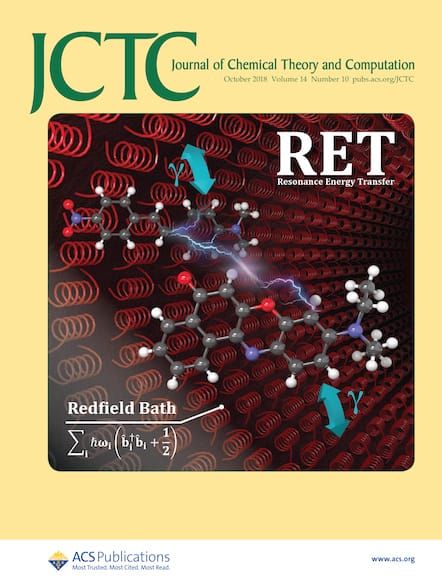Mixed Quantum/Classical Theory for Rotational Excitation of HDO in Collisions with H2: Symmetry Breaking Effects and Time-Dependent Dynamics.
IF 5.5
1区 化学
Q2 CHEMISTRY, PHYSICAL
引用次数: 0
Abstract
The application of the mixed quantum/classical theory of inelastic scattering (MQCT) to the rotational excitation of the isotopically substituted water molecule, HDO, in collisions with hydrogen molecules is presented. Modification of the potential energy surface of thewater + hydrogen system, due to isotopic substitution, is described, and the effect of symmetry breaking is explored. It is found that the additional terms of potential expansion are significant and, therefore, are expected to play an important role during the collision process. The modeling of HDO + H2 collision is carried out using both the MQCT method and the full-quantum CC method of MOLSCAT, using the latter as a reliable benchmark. Both para- and ortho-states of projectile H2 are considered. The focus is on those transitions that become allowed in HDO due to symmetry breaking, in contrast to the symmetric H2O where the para-ortho transitions are forbidden. Very good agreement between the two methods is observed, not only for the total but also for partial cross sections of rotationally inelastic transitions in HDO. Moreover, the time-dependent MQCT method offers an additional insight into the process of molecule-molecule collision, rotational state excitation, and energy transfer between the collision partners. It reveals an important role of the excited rotational states of the projectile H2 molecule and shows that, at certain values of collision impact parameters (or orbital angular momentum), the stepladder of sequential state-to-state transitions may lead to a surprising distribution of final state populations in HDO.HDO与H2碰撞中旋转激发的混合量子/经典理论:对称破缺效应和时间相关动力学。
提出了混合量子/经典非弹性散射理论(MQCT)在同位素取代水分子(HDO)与氢分子碰撞时的旋转激发中的应用。描述了由于同位素取代引起的水+氢体系势能面变化,并探讨了对称破缺的影响。研究发现,潜在膨胀的附加项是显著的,因此,预计在碰撞过程中起重要作用。采用MQCT方法和MOLSCAT的全量子CC方法对HDO + H2碰撞进行建模,并将后者作为可靠的基准。考虑了H2的准态和正态。重点是在HDO中由于对称破缺而允许的那些跃迁,而在对称的H2O中,对正交跃迁是被禁止的。两种方法之间的一致性非常好,不仅是对HDO中旋转非弹性跃迁的总横截面,而且对部分横截面。此外,时间相关的MQCT方法提供了对分子-分子碰撞、旋转状态激发和碰撞伙伴之间的能量传递过程的额外见解。它揭示了弹丸H2分子激发态的重要作用,并表明,在一定的碰撞冲击参数(或轨道角动量)下,顺序状态到状态转换的阶梯可能导致HDO中最终状态种群的惊人分布。
本文章由计算机程序翻译,如有差异,请以英文原文为准。
求助全文
约1分钟内获得全文
求助全文
来源期刊

Journal of Chemical Theory and Computation
化学-物理:原子、分子和化学物理
CiteScore
9.90
自引率
16.40%
发文量
568
审稿时长
1 months
期刊介绍:
The Journal of Chemical Theory and Computation invites new and original contributions with the understanding that, if accepted, they will not be published elsewhere. Papers reporting new theories, methodology, and/or important applications in quantum electronic structure, molecular dynamics, and statistical mechanics are appropriate for submission to this Journal. Specific topics include advances in or applications of ab initio quantum mechanics, density functional theory, design and properties of new materials, surface science, Monte Carlo simulations, solvation models, QM/MM calculations, biomolecular structure prediction, and molecular dynamics in the broadest sense including gas-phase dynamics, ab initio dynamics, biomolecular dynamics, and protein folding. The Journal does not consider papers that are straightforward applications of known methods including DFT and molecular dynamics. The Journal favors submissions that include advances in theory or methodology with applications to compelling problems.
 求助内容:
求助内容: 应助结果提醒方式:
应助结果提醒方式:


